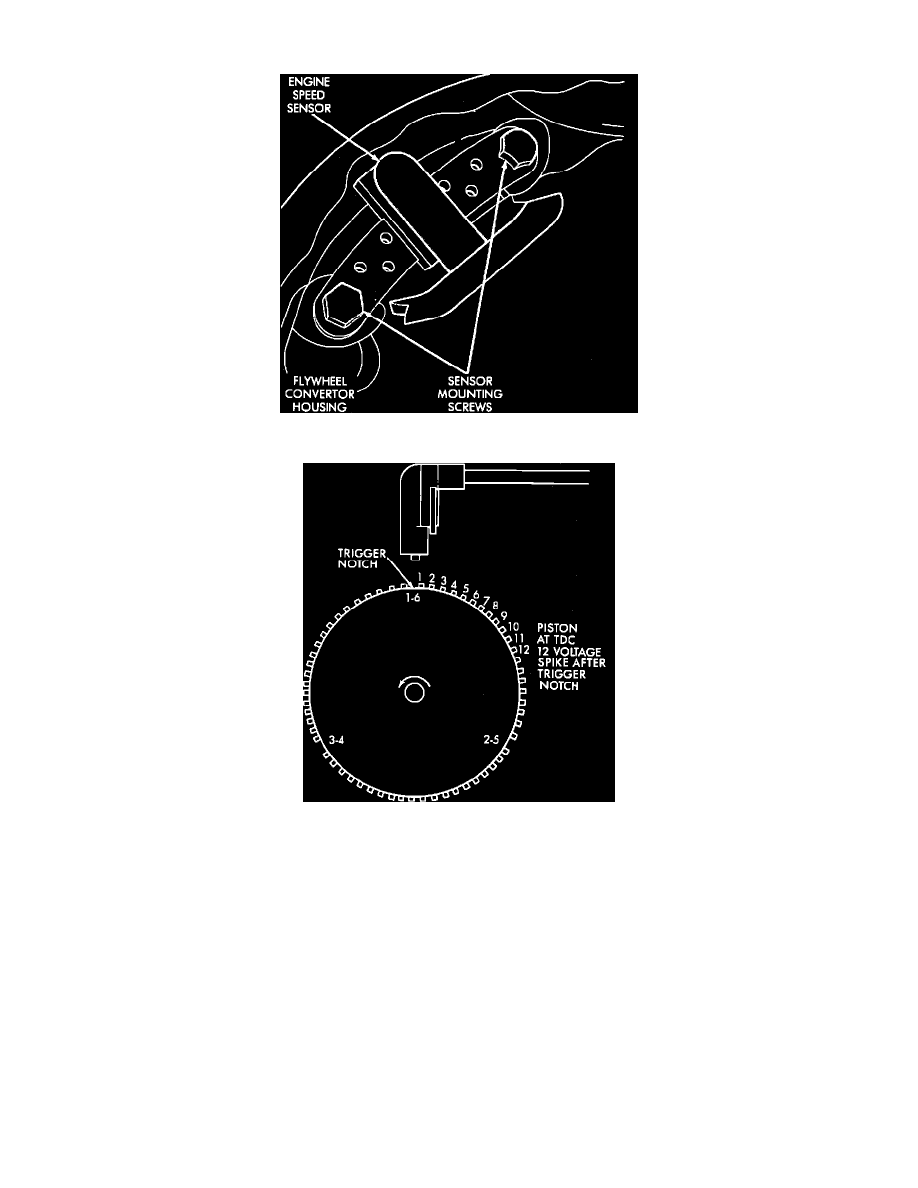Wagoneer L6-242 4.0L VIN L FI (1989)

Crankshaft Position Sensor: Description and Operation
Engine Speed Sensor
Engine Speed Sensor Operation
This sensor is located on the bellhousing of the transmission, and is used to send voltage signals, relating to engine speed and piston position, to the
ECU. The ECU converts the signals, rate of change of crankshaft angle and crankshaft angle, into engine RPM and piston position respectively. The
sensor detects top dead center (TDC), bottom dead center (BDC), and engine speed (RPM) by counting the flywheel teeth as they pass under it.
The flywheel has a large drive plate with three large trigger notches (each 120 degrees apart), and twenty small teeth in between each trigger notch. Each
large trigger notch is located 12 teeth away from TDC of its respective piston.
The sensor has a magnetic core inside it that creates a voltage output when a conductor passes through the magnetic flux that it emits. When a small
tooth and notch passes under the magnetic core in the sensor, they move through the lines of magnetic flux emitted by the sensor. As these teeth
approach the lines of magnetic flux, they cause the magnetic field to concentrate or intensify, and as the teeth pass through the magnetic field, the
magnetic field collapses. This concentration and collapsing of the magnetic field causes voltage spikes in the sensors' pick-up winding. The ECU sees
every one of these voltage spikes and counts them as they pass the sensor.
When a large notch passes under the sensor, there is a longer delay than usual. When the ECU sees this longer delay, it knows that TDC is only 12 teeth
away. Through the use of the Engine Speed Sensor (CPS) and other sensor inputs, the ECU controls the ignition and injector timing.
